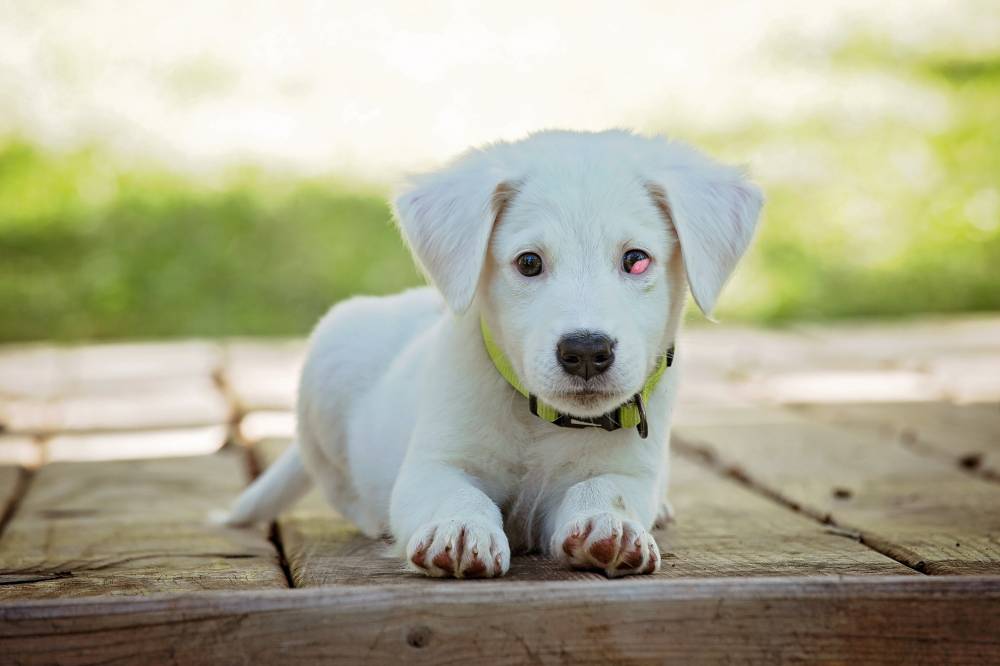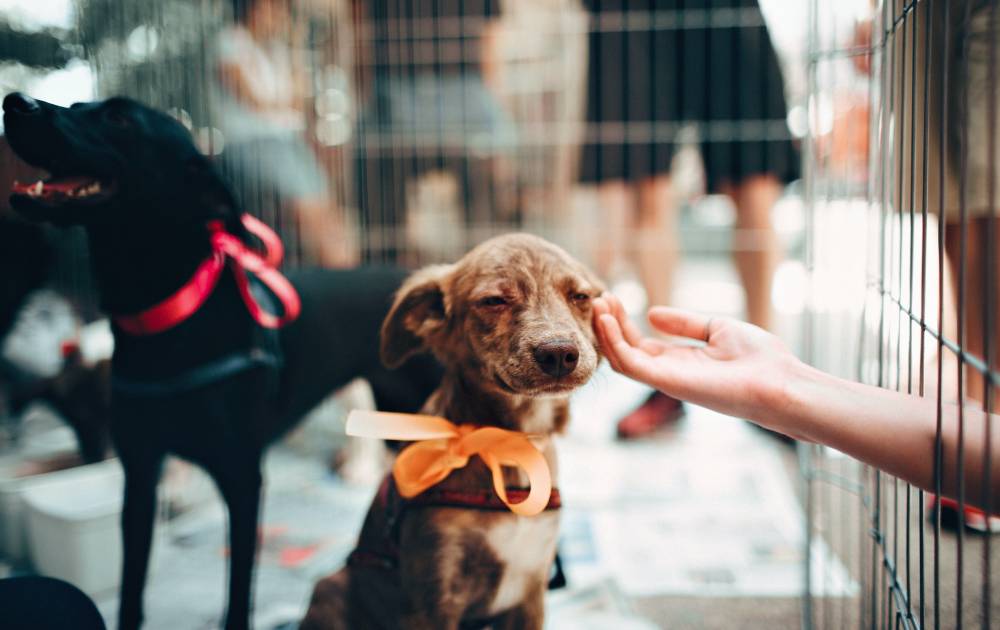Quick Navigation
An unknown scary-looking bump on a dog’s eyelid can be frightening to a dog owner, especially when it seems to emerge overnight.
However, 80% of bumps on dogs’ eyelids are noncancerous.
It means they can easily be treated without intensive surgery.

Nevertheless, bumps on a dog’s eyelid do present some concern, and they should be treated.
Asides from the fact that this bump changes the dog’s look, leaving the bump can create some problems for the dog.
The longer the bump remains on the dog’s eyelid, the more likely the eye can get exposed to infections.
It can endanger the dogs’ vision eventually.
What Are Those Pink Bumps On The Dogs’ Eyelids?
Dogs have three eyelids in each eye.
The first eyelid is located below the eyebrows, the second above the cheek, and the third eyelid is close to the nose bone.
The third eyelid is one of the tissues that protect the dogs’ eyes.
The third eyelid uses the preocular tear film to wipe off dust, debris, and other junk away from the eye.
At the base of the third eyelid is one of the glands responsible for shedding tears.
The gland provides the eye with comfort and protection from the tears produced.
This gland is known as the nictitans gland.
This gland can sometimes inflate and change position from the base where the third eyelid is located.
When this happens, it appears as a pink bump on the dog’s eyelid.
Cherry eye is another term for this ailment.
What Are The Causes Of The Pink Bump On The Dogs’ Eyelids?
1. Injury
The cherry eye can pop out of a dog’s eyelid when the nictitans gland weakens.
Eventually, this will appear as a swollen pink bump.
The nictitans gland can become weak as a result of an injury to the third eyelid.
The glad can also be weak as a result of consistent rubbing of the eyes with paws.
Also, cherry eye is most common in puppies under one year old.
When the tiny ligament holding the third eyelid gland in place stretches or ruptures, the condition results.
2. Breed Predisposition
The swollen bump can occur with any dog breed with a weak nictitans gland.
Your dog may develop a benign or malignant mass on the eyelid as a result of gland problems or a genetic breed predisposition.
There are some breeds that are prone to this condition.
It includes Poodle, Bulldog, Shih Tzus, Cocker Spaniel, Lhasa Apsos, Beagle, and Boston terrier.
Brachycephalic breeds are dogs with a flattened area at the back of the head, short snouts, short throats, and short limbs.
These dog breeds often develop the pink bump, especially puppies under a year old.
The pink bump is not life-threatening in dogs and is not extremely painful.
Immediately after noticing a growth on the eyelid, you should have it examined by a veterinarian because it may cause your pet discomfort or impair their vision.
Dog eyelid tumors are also very typical, particularly in older dogs.
Although most of these tumors on the eyelids are benign, some of them can be cancerous.
Tumors on the eyelid glans are common.
The majority of the time, these tumors are purely cosmetic and do not harm your dog.
If the tumors cause your dog discomfort, they can be removed.
Will The Pink Bump Leave Without Treating It?
One of the issues dogs face with cherry eyes is that the presence of the bump can be itchy to the dog.
Nevertheless, dogs can irritate it further by rubbing the infected eye with their paws if left untreated.
It can lead to an eye infection like conjunctivitis (pink eye).
It could also create an open wound and can lead to a corneal ulcer.
The presence of the bump would also make it difficult for dogs to close the infected eye.
Because of the inflammation in the gland that produces tears, fewer tears will be produced.
It can give rise to long-term eye problems like corneal damage or keratoconjunctivitis sicca (dry eye).
The eye does not have enough tears to wipe away foreign substances that can infect the eye.
Will the pink bump disappear from the dog’s eyelid without treating it?
The possibility of the pink bump on a dog’s eyelid disappearing is highly unlikely.
It is because dogs can be uncomfortable with a portion of their eye blocked.
They tend to rub or scratch the infected eye with their paw, which will only worsen the condition.
If a dog has cherry eye, both eyes are likely to be infected.

How To Treat The Pink Bumps On Dogs’ Eyelids?
Massage
The pink bump can become noticeable and develop quickly once the nictitans gland at the base of the third eyelid weakens. T
he gland eventually stretches out of the third eyelid.
If the pink bump is caught early, the swollen gland can be massaged back to the position it popped out from.
To do this, close the dog’s eye and gently massage the pink bump back into the eye socket.
Don’t touch the pink bump; hold the dog’s eye closed and massage it closed; else it can provoke further irritation.
For instance, if the pink bump is located on the right side of the dog’s eye, close the dog’s eye.
Then gently massage in the direction toward the dog’s snout.
If the bump is located on the left side of the dog’s eye, close the dog’s eye. Then repeat the same procedure above.
Gently massage the infected eye for about two minutes, then check the progress of the regressed bump.
This procedure is most effective when the pink bump is small and caught at an early stage.
This procedure may or may not work if the pink bump has grown big and has taken weeks to develop.
Surgical Operation
Surgical treatment is the most common means of treatment for the cherry eye.
The need for an appointment with a veterinarian applies to dog owners who have little to no medical background.
The vet can answer any additional questions and explain the surgical procedure in detail.
Examples of surgical procedures include the anchoring method, the pocket method, and the removal method.
The Anchoring method involves stitching the inflamed gland to the globe.
The pocket method requires stitching the tissues around the displaced position of the inflamed gland.
The stitched tissue would then be enclosed in a layer of the conjunctiva.
The removal method involves removing the inflamed gland from the third eyelid.
Removal of the inflamed gland can prove to be lethal in the long term.
It is because the removed nictitans gland is responsible for producing tear film across the eye.
The production of tears is essential to protect the eye.
The absence of the tear film could trigger eye infections like keratoconjunctivitis sicca(dry eye).
Non-surgical Operation
The alternative non-surgical treatment involves applying ointments to the infected eye, which can be less expensive than surgical procedures.
For the treatment of the infected eye, ointments are available.
It includes Steroids, Doxycycline (antibiotic), Rymadil (which is an anti-inflammation drug that helps reduce the swollen eye), and Matovit syrup (multivitamin).
You can also make additional inquiries from a vet about the dosage.
Ask also if there are chances of treating the pink bump with non-surgical operations.
A 14-day course of treatment with this drug is possible.
They are most effective to treat the pink bump when caught at an early stage.
If you don’t treat cherry eye, your dog may experience more swelling and irritation in addition to other health issues.
What Is The Best Method?
Depending on the size of the bump, each procedure can be taken conversely for effective results.
Removing the inflamed gland would be the most effective treatment procedure, but this procedure can prove fatal in the long run.
The next effective treatment procedure would be the pocket method surgical operation.
In comparison to anchoring, the pocket method is preferable.
It is because the pocket method is easy for veterinarians to learn.
The anchoring method is not as effective because it has a high probability of re-occurrence.
The non-surgical and massage approach are also feasible.
However, these approaches are most effective to treat the pink bump when caught at an early stage.

Lucy is a real-time contributor to Purrfect n’ Pawesome, along with being a freelance writer to various pet forums and platforms. She started writing professionally in the year 2016. Earlier, she enjoyed her community life as a pet rescue volunteer and offered boarding services to pet owners. Her extensive experience in the pet field is now the basis for her writing at this site.
She loves to collect animal facts from around the globe and then transform them into amazing stories for her readers. For Lucy, the mission is to bring pet love to every home and equip the pet parents with the required useful and authentic information to nurture their pet accordingly.
She lives with her two cats and a shepherd mix, whom she loves the most. Despite her extremely busy life, she spends some time with wildlife and outer space to relax her mind and enhance her observation.
Purrfect n’ Pawesome is a platform that believes in providing our pets with the right kind of nurturing, care and upbringing to assist them in leading a healthy life. Go to our blog section and read out some pawesome and informative articles to ease your parenthood.



